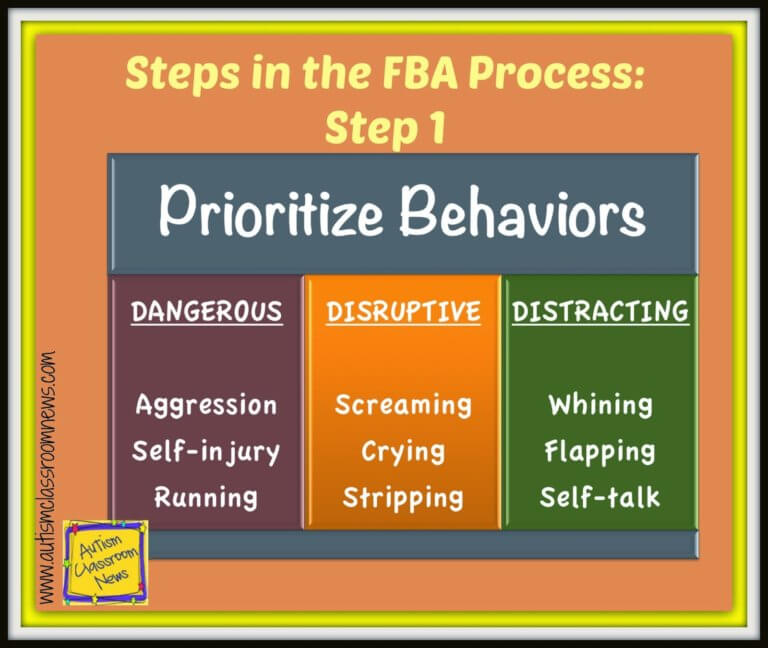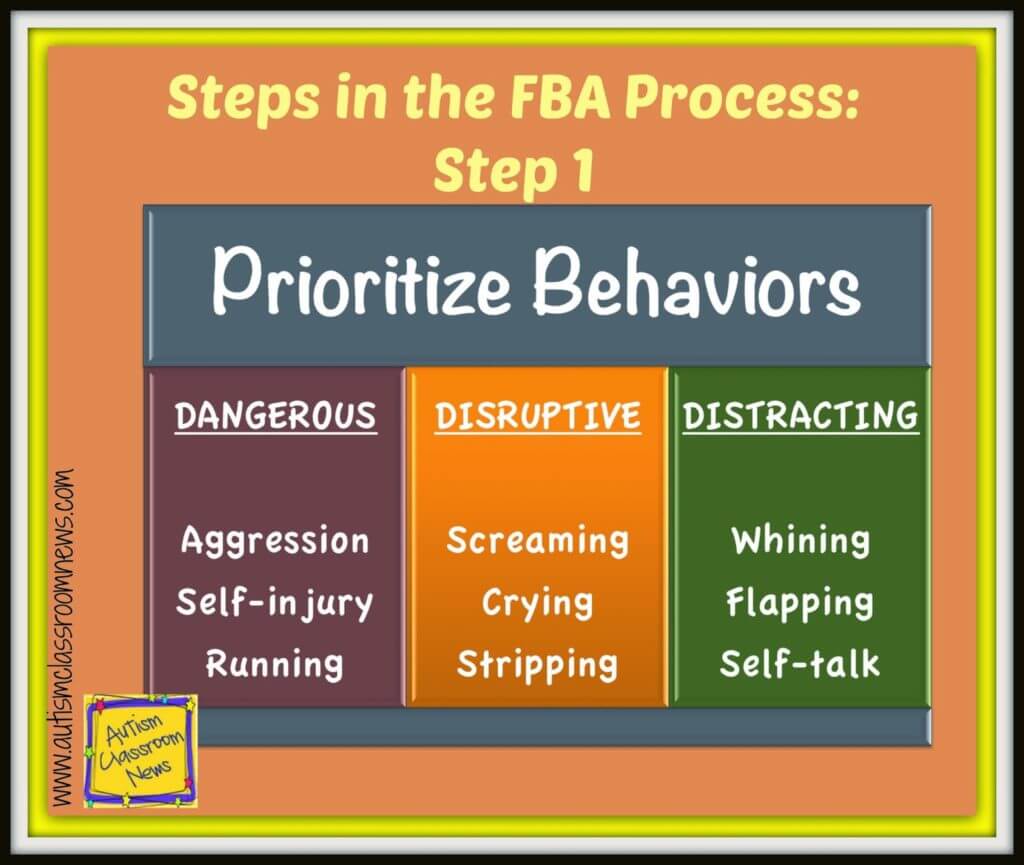To see the other posts in this series click HERE.
The next step in focusing the assessment is to prioritize the behaviors. Most behaviors don’t occur alone and students with challenging behavior often show more than one. These behaviors may or may not have different functions, but we need to narrow down which ones we are going to address first. One of the biggest difficulties I see with teams working to decrease challenging behavior is that we try to tackle too many things at one time and when it doesn’t work, we give up. So, we need to figure out what we are going to address first. Let’s start with a story.
I once was asked to do a functional behavior assessment with a student who could walk around his entire classroom on top of the furniture. He would jump from shelf to shelf to table around the entire perimeter of the room. If the staff managed to get him down, he would run around the table until they caught him or he would run out of the room. He also engaged in a lot of yelling and other behaviors, like taking off his shoes, that disrupted the routine of the classroom. So as we defined the behaviors, it became clear that we probably couldn’t tackle all the behaviors at once. So, as a team we determined that we needed to address the dangerous behaviors first–the first priority had to be climbing and walking on the furniture and running away. Then we could deal with the disruptive behaviors like taking off his shoes. Since his behavior turned out to be almost completely to gain attention (and he was quite good at it), we ended up taking care of many of the lower priority behaviors at the same time as the higher priority because they served the same function. Turns out that when we stopped focusing on trying to keep his shoes on, for example, he stopped taking them off. We just made a rule that he had to put them on to go outside, which he liked, so he would put them back on.
There are several ways to prioritize behaviors to determine what to address first. One of the most common is shown above: Dangerous behaviors are addressed first, then disruptive behaviors and then behaviors that are note that disruptive but can be very distracting or set the person apart. Dangerous behaviors would be ones that could hurt the individual or others. Disruptive behaviors are those that disrupt the environment, for instance yelling out randomly when working in an office setting with cubicles. And finally distracting behaviors are those that others might be distracted by or that interfere with the student’s ability to concentrate or attend.
Another issue to consider is how the behaviors will affect the individual’s opportunities to move to a more inclusive environment. For instance, in kindergarten some of the stereotypical behaviors students with autism show, like rocking, will not stand out in the kindergarten class. However, as the student gets older, those behaviors will stand out more and we have to decide, as a team, whether they are something we need to address.
Another concern is what behaviors have the biggest impact on the individual’s ability to learn. If a stereotypical behavior stops when you give the student work to do, then it isn’t interfering significantly. However, if he can’t work in the classroom because he has to walk through every doorway 10 times or have all the lights off, those are behaviors that interfere with his learning.
Finally, if you are working with families or are a staff member coming into a classroom or other environment to support behavior, you want to assure that you address dangerous behaviors, but you also want to choose behaviors that are manageable for them to have success with. You want the adults to be reinforced for behavioral support in the same we want students to be reinforced for successful behavior. Choosing a behavior that they can tackle quickly and see a big result will often jump start the program. While this type of prioritizing becomes a bigger issue in behavioral support plans, it’s worth mentioning here because it plays a role in what you want them to assess.
Prioritizing the behaviors for assessment allows us to focus the assessment so that it can be a manageable and successful process. So, how do you prioritize behaviors when you assess them? Now that we’ve focused the assessment, it’s time to move on to gathering information, and that’s where I will pick up in the next post.
Until next time,








